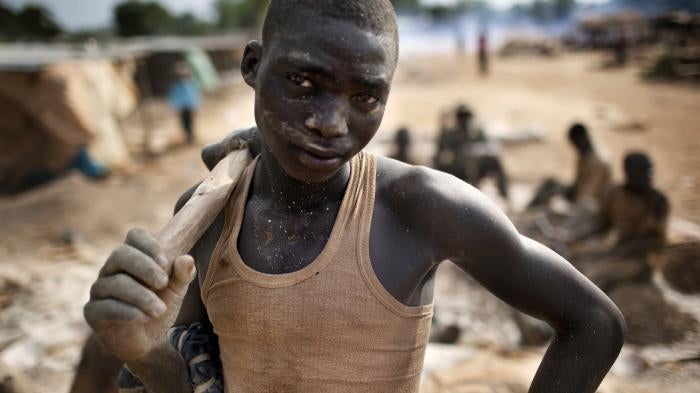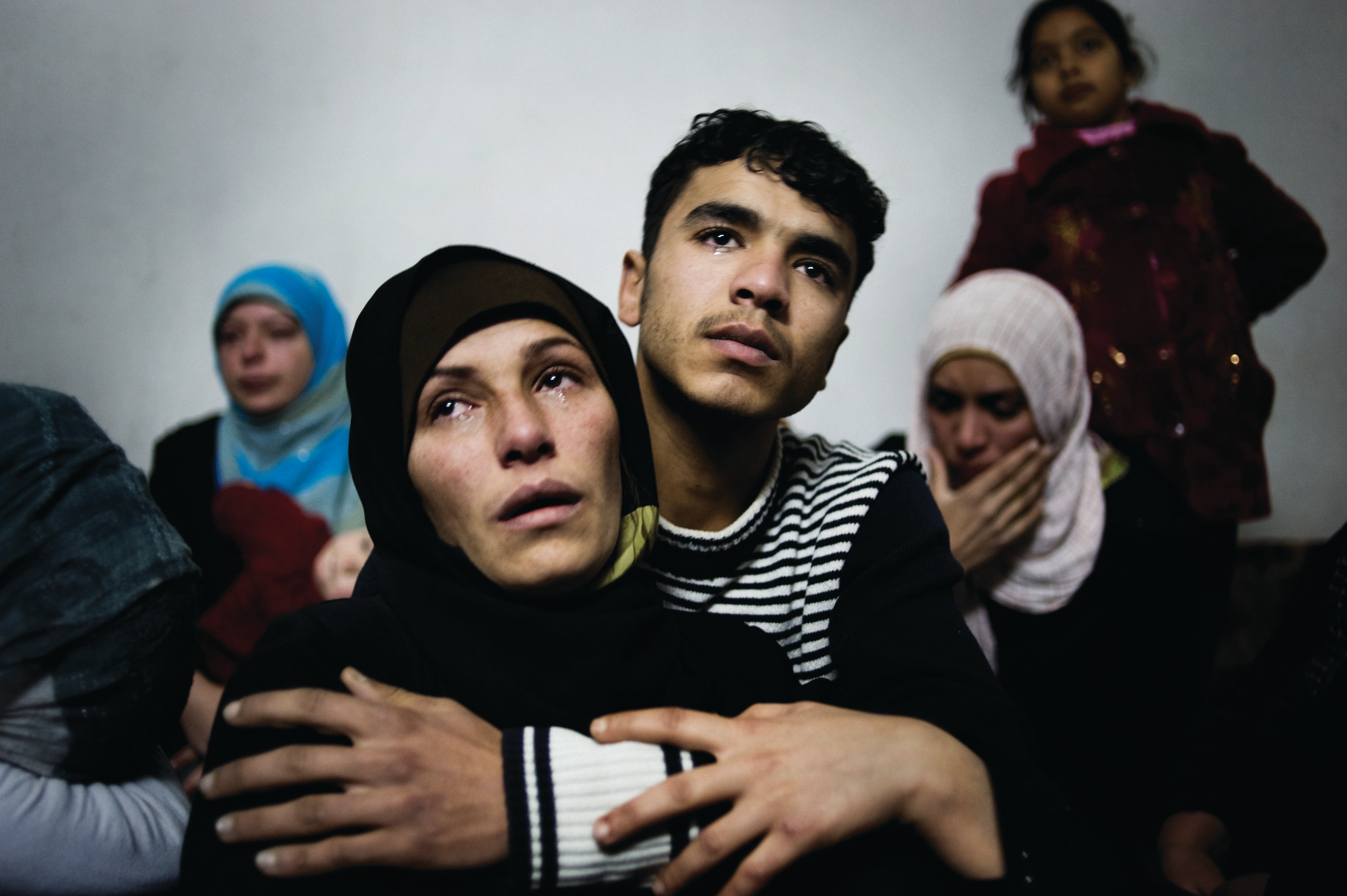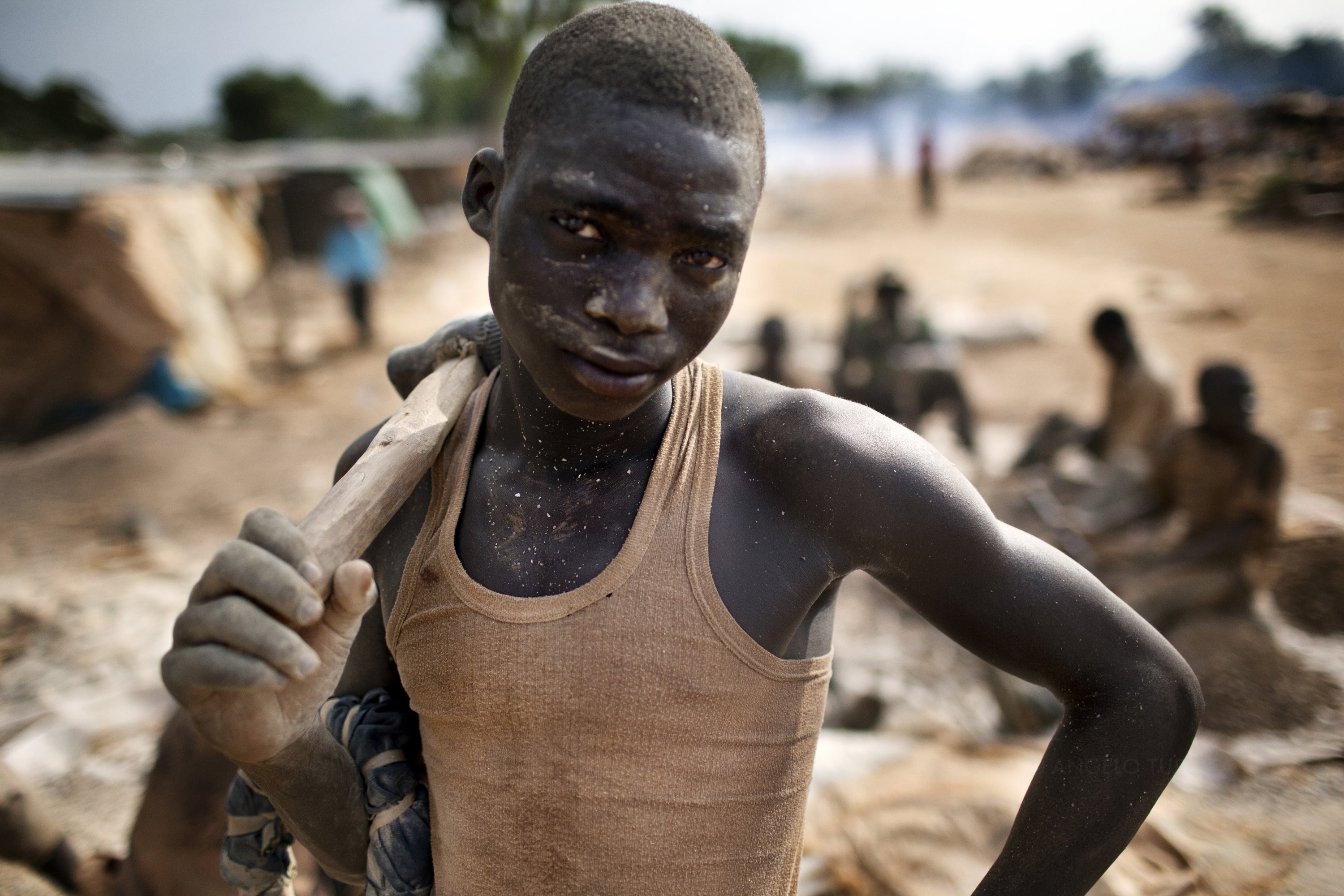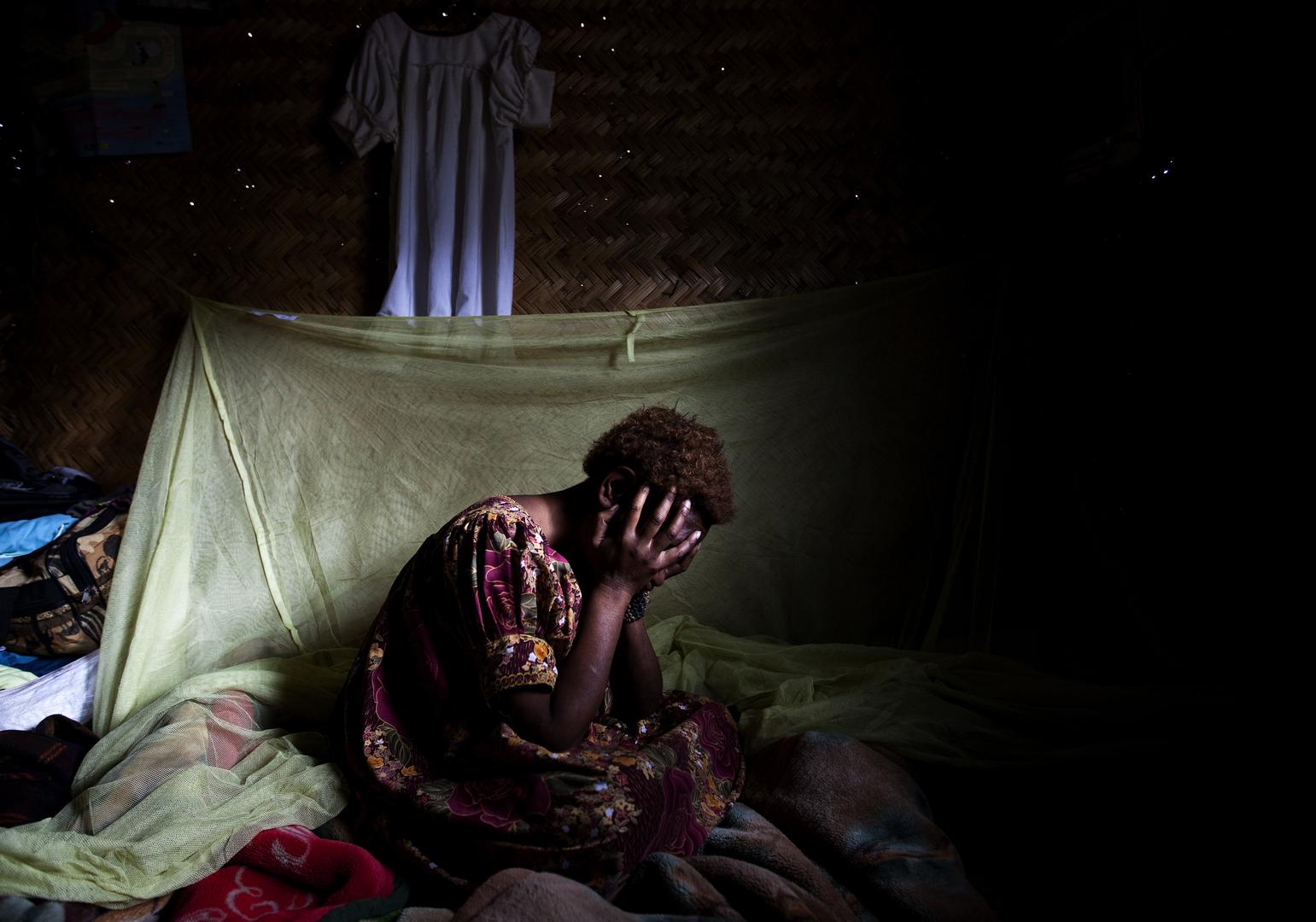Every year, environmental crises affect millions of people around the world causing sickness and decimating lives and livelihoods.
When environmental degradation garners international attention its impact is often framed in terms of harm to nature. But another, often overlooked, way to understand a toxic spill or a mining disaster is in terms of its impact on human rights—not least the right to life, to health, and to safe food and water.
In 2011, in Henan province, eastern China, for example, rivers ran blood-red from pollution, and thick smoke choked the air around the lead smelters and battery factories that power the local economy—a deeply worrying situation in terms of environmental pollution. But as the Human Rights Watch 2011 report My Children Have Been Poisoned showed, Henan’s health and environmental crisis has also led to human rights violations that have robbed citizens of a host of internationally recognized rights—such as those to health and to protest peacefully—and have jeopardized the physical and intellectual development of thousands of children.
Unfortunately, in practice, governments and international agencies do not often enough analyze environmental issues through the prism of human rights or address them together in laws or institutions. But they should, and they should do so without fear that doing so will compromise efforts to achieve sustainability and environmental protection.
Indeed, rather than undermine these important goals, a human rights perspective brings an important and complementary principle to the fore—namely that governments must be accountable for their actions. And it provides advocacy tools for those affected by environmental degradation to carve out space to be heard, meaningfully participate in public debate on environmental problems, and where necessary, use independent courts to achieve accountability and redress. As the old legal maxim goes, there can be no right without a remedy.
Regional human rights instruments—such as the Additional Protocol to the American Convention on Human Rights in the Area of Economic, Social and Cultural Rights, the African Charter on Human and Peoples’ Rights, and its Additional Protocol on the Rights of Women—recognize a right to a healthy environment (or a “general satisfactory” environment in the case of the African Charter, adopted in 1981). And it has been over two decades since the United Nations General Assembly in a resolution recognized that all individuals are entitled to live in an environment adequate for their health and well-being.
In a 2001 groundbreaking ruling, the African Commission on Human and Peoples’ Rights demonstrated that regional accountability for violations of human rights, including the right to a healthy environment, was possible. The commission found that, through a consortium with Shell Petroleum Development Corporation, the former military government in Nigeria had caused environmental damage to the Ogoni People in the Niger Delta region, in violation of the right protected by African Charter. The commission found that the government had not taken the necessary steps to protect the Ogoni population from harms done by the oil production and had not “provided nor permitted studies of potential or actual environmental and health risks caused by oil operations in Ogoni Communities.” Strikingly, the commission also found that the right to life had been violated by the level of “humanly unacceptable” pollution and environmental degradation that had destroyed the lands and farms upon which the Ogonis‘ survival depended.
Yet despite such decisions, there is still insufficient human rights accountability for environmental issues, as illustrated by the scope of environmental harm that occurs globally without apparent redress. The international human rights community needs to help strengthen both the content and framework for the right to a healthy environment, and to institutionalize the link between human rights and the environment. Such steps would include developing accountability mechanisms that could offer an effective remedy for the millions of people impacted by environmental crises.
The Right to Life and to Health
Under international human rights law, governments have numerous obligations to protect their citizens’ right to life and to health. The Universal Declaration of Human Rights, the International Covenant on Economic and Social and Cultural Rights (ICESCR), and the Convention on the Rights of the Child (CRC) all establish the right to the highest attainable standard of health. Under the ICESCR, the right to health includes an obligation to improve environmental health, to protect citizens from environmental health hazards, to guarantee healthy working conditions, and to protect the right to safe food and safe water.
Yet, many governments regularly fail to protect and uphold these commitments.
Human Rights Watch has documented the devastating impact of such neglect by authorities in many parts of the world.In the state of Zamfara, northern Nigeria, for example, over 400 children have died of lead poisoning since 2010—one of the worst recorded outbreaks in history—due to exposure to lead-contaminated dust produced during small-scale gold mining. Nigeria’s government has dragged its feet in the face of this unprecedented disaster, despite many signs of an impending crisis. In the short film A Heavy Price (2012), Human Rights Watch documented how children continue to live and play in contaminated homes and face exposure to lead at life-threatening levels that can cause life-long disabilities, if not death.
Unfortunately, Nigeria is not a unique case: governments often respond to environmental problems with denial, or offer weak and disjointed responses that fail to clean up environmental damage, impose or enforce regulations, or prevent and treat resulting health conditions.
The Right to Know, Protest, and Seek Justice
International law also obligates governments to guarantee people’s right to know, participate in political processes, peacefully protest, and seek justice. These rights, enshrined in the International Covenant on Civil and Political Rights (ICCPR), ensure that citizens can actively and meaningfully participate in decisions that affect their lives.
In practice, governments frequently fail to inform citizens about the most basic facts regarding environmental health, violating their right to information. In Japan, for example, the government failed to provide residents of Fukushima with basic information about the level of radiation in their food and environment after the prefecture’s March 2011 nuclear disaster, leaving local newspapers, as one local doctor told Human Rights Watch, “to accept whatever the prefecture says on faith.”
Even in countries that have elaborate safeguards to ensure transparency and participation of affected populations, the reality is often bleak. In many countries, governments not only fail to provide information to their citizens, they also clamp down on those who demand transparency and official remedies. Human Rights Watch has documented a range of government actions against those who protest—and even those who merely seek information—including threats, arrests, imprisonment, and even murder.
Our 2010 research in four Chinese provinces, for example, found that the government detained people protesting lead pollution from factories, and even parents seeking medical treatment for their poisoned children (My Children Have Been Poisoned). In the Philippines, Human Rights Watch has documented the murder of three environmental activists since October 2011: the men had vocally opposed mining and energy operations that they said threatened the environment and would displace local communities in Bukidnon and North Cotabato provinces from their land. No one has been punished, and evidence points to the involvement of paramilitary forces under military control. And in Kenya—which in 2010 included the right to a healthy environment in its constitution—Human Rights Watch has been working with an environmental activist who has repeatedly faced threats and arrest for seeking information and redress from a local factory that has polluted the air and water near the city of Mombasa.
Regulating Business
Businesses are at the heart of environmental problems today. Whether multinational corporations or small, local operations, they have a responsibility to ensure that their operations do not cause or contribute to human rights violations, as reflected in the United Nations Guiding Principles on Business and Human Rights. It is a responsibility they frequently fail to fulfill (see also “Without Rules: A Failed Approach to Corporate Accountability” in this volume).
For example, the Porgera mine of Barrick Gold in Papua New Guinea dumps 14,000 tons of liquid mining waste daily into a nearby river, causing potential environmental and ill-health to local communities (Gold’s Costly Dividend, 2011). In Bangladesh’s capital Dhaka, around 150 tanneries expose local residents to untreated effluent that contains chromium, sulphur, ammonium, and other chemicals that cause skin diseases, rashes, and diarrhea, among other health problems (Toxic Tanneries, 2012).
Companies, including foreign investors, international buyers, and retailers, have a responsibility to ensure that they are not contributing to human rights abuses, either directly or indirectly. The store that sells a belt made from leather tanned and cured in acid-filled pits in Dhaka should have due diligence procedures in place to ensure it does not indirectly contribute to rights abuses; so should international buyers to ensure their suppliers are not violating health and safety laws or poisoning the environment. And governments should ensure they adequately regulate the private sector—something they are often reluctant to do because environmental regulations interfere with private sector interests and are seen as burdening economic development and growth.
For example, in October 2010, Canada’s House of Commons voted down a bill that would have allowed the government to monitor the environmental and human rights impacts of Canadian extractive industries operating globally. In doing so, an important opportunity was lost: Canada is home to most of the world’s mining and exploration companies. The industry accounted for 21 percent of Canadian exports in 2010 and derived about US$36 billion dollars from its mining practices that year.
In Bangladesh, where tanneries contaminate air, water, and soil, our research found that the government has failed to enforce environmental or labor laws, and for a decade has ignored a court ruling ordering the government to ensure that the tanneries install adequate waste treatment systems. A government official told Human Rights Watch that the tannery sector is not properly regulated because “tannery owners are very rich and politically powerful.”
And in India, for example, a 2012 Human Rights Watch investigation in the southern states of Goa and Karnataka (Out of Control) found that the supposedly independent and accurate environmental impact assessments of potential mining projects are often flawed and commissioned by the same, largely domestic, mining companies that seek permission from the Indian government to operate.
Corruption also sometimes undermines environmental regulations and safeguards. In Indonesia, Human Rights Watch has shown how blatant corruption has undermined environmental policies on logging (Wild Money, 2009); as a result, much of Indonesian timber has been logged illegally, violating policies intended to protect local communities and the environment.
The Hardest Hit
Environmental degradation often disproportionately impacts vulnerable and discriminated against populations—including poor rural populations, displaced people, women, ethnic minorities, and indigenous people—which rarely have access or political clout to be able to critique governments or hold them to account.
Indigenous peoples are particularly susceptible to serious rights violations when governments or multinational corporations clear their land and ecosystems in the name of “economic development.” According to the UN Declaration on the Rights of Indigenous Peoples, indigenous peoples can only be relocated with their free, prior, and informed consent, after agreement on just and fair compensation of land, property, and livelihood. Yet as Human Rights Watch has shown, this is often not the case.
In Ethiopia, for example, Human Rights Watch research in 2011 found that indigenous people are being forcibly removed from the Omo Valley, which provides their primary source of livelihood, to make way for large-scale commercial sugar plantations. The government has used harassment, violence, and arbitrary arrests to impose its plans, leaving members of local indigenous groups, including one man from the Mursi tribe, to wonder, “[w]hat will happen if hunger comes” when the river has dried and land has been seized? (What Will Happen If Hunger Comes? 2012)
Another group vulnerable to the effects of environmental pollution is children—even though protecting child health is a core obligation in international law. Toxic chemicals have particularly harmful consequences for children, whose developing bodies absorb them more easily than those of adults, leading in some cases to irreversible long-term damage, disability, or even death.
Children from poor, disadvantaged, or marginalized backgrounds can be particularly at risk as their communities lack political influence and information. For example, Human Rights Watch research on child labor in artisanal gold mining in Mail—an industry that involves an estimated 15 million artisanal gold miners globally—has found that children’s exposure to mercury, a toxic metal, has hardly been addressed on national or global levels (A Poisonous Mix, 2011).
Human Rights Watch has also documented how children and adults from the marginalized Roma minority, who were displaced after the 1999 war in Kosovo, were housed for years in a lead-contaminated displaced camps in northern Kosovo (Kosovo: Poisoned by Lead, 2009). Children were particularly vulnerable to lead poisoning. The UN—the effective civil authority at the time—knew about the contamination, but failed to move them to a safer location for over five years. It lacked a comprehensive health plan and stopped treatment for children without any medical reason.
Children in wealthy countries are also not immune to the impacts of a toxic environment. In the United States agriculture industry, child laborers—many from migrant families—work in or near fields that are regularly sprayed with pesticides. Yet the US government has failed to outlaw hazardous child labor in agriculture, prioritizing the interests of agribusiness over stricter regulations on pesticide exposure for children (Fields of Peril, 2010).
Global Challenges and Opportunities
The government response to environmental degradation is often weak and disconnected, and oblivious to the critical impact that climate change, pollution, and other environmental problems have on human rights.
In June 2012, the Rio+20 Summit brought together more than 100 heads of state or government and 45,000 people in the biggest UN conference to date. However, the scale of the gathering far exceeded its efficacy. World leaders missed the chance to bridge the false divide between development and environmental protection and almost completely whittled down rights language in the final document, “The Future We Want.”
International laws and regulations are important tools for protecting the environment, but they tend to focus on technical aspects of regulation, emissions, and processes, and—like the 2004 Stockholm Convention on Persistent Organic Pollutants—often fail to comprehensively address the health and human rights impact of environmental degradation, if they address them at all.
And while international financial institutions aim to promote development, their actions sometimes violate human rights and result in further environmental degradation. The World Bank’s safeguard policies, which are designed to prevent social and environmental harm in its projects, require governments to analyze the environmental impact of certain projects but do not require a comprehensive analysis of human rights impacts. The bank’s review and update of these policies is an important opportunity to remedy this major shortfall.
But the news is not all bad.
Environmental NGOs, other civil society groups, and affected communities have scored some notable successes in their efforts to push for accountability. In Burma, open protest by civil society groups against the potentially devastating consequences of the Myitsone Dam project on the Irawaddy River prompted the Burmese government in 2011 to suspend its plans for what would have been the one of the world’s largest hydroelectric power stations.
And in 2012, the UN Human Rights Council (HRC) appointed its first independent expert on human rights obligations relating to the enjoyment of a safe, clean, healthy, and sustainable environment. One of the expert’s mostimportant tasks will be to help define the content of the human right to a healthy environment, and to seek broad buy-in and support for ensuring full respect, protection, and fulfillment of this right.
Another positive move is the November 2012 road map by Latin American governments towards a regional treaty on rights of access to environmental information, participation, and justice. Such an instrument already exists in Europe: many European and Central Asian governments have ratified the 2001 Aarhus Convention on access to information, public participation, and access to justice in environmental matters, which is the first of its kind to codify these civil rights in relation to the environment.
There are also some future opportunities for pressing a human rights approach when it comes to environmental issues—including negotiations for the global mercury treaty.
Human Rights Watch has participated in these negotiations, in Kenya in 2011 and Uruguay in 2012, as well in regional meetings in Latin America and Africa. Throughout our advocacy we have urged a stronger focus on human rights, in particular the right to health and protection from hazardous child labor. During negotiations in Uruguay, governments agreed to include special measures in the treaty for children affected by mercury in artisanal gold mining. It was also agreed that governments must devise health strategies on mercury for affected artisanal mining communities. While the treaty still lacks references to human rights and a strong overall health strategy on mercury, the specific measures on gold mining are a step in the right direction.
What Next?
Even when governments do enforce environmental regulations and safeguards, they often disregard the harmful impact of environmental problems on human rights, and the disproportionate impact on vulnerable and marginalized populations.
What is lacking is a broader framework that analyzes human rights impacts and protects the right to health, food, water, and livelihoods—core economic rights—as well as civil and political rights, such as the rights to information, participation, free expression, and remedy for all citizens. When governments are not held accountable, they are less likely to remediate contaminated sites and ensure full access to justice to those whose rights have been violated.
Strong systems of accountability—in which governments, international financial institutions, businesses, and other private actors must account for their actions using the principles of transparency and full information, participation, and free expression—are needed to address the human rights impact of environmental damage. And there needs to be rigorous regulation processes, including government oversight, to prevent environmentally damaging projects from operating in the first place. When harm is done, those responsible must account for their actions, remediate the situation, and face justice.
The HRC, and those governments which have not done so yet, should recognize the right to a healthy environment as a freestanding right, which would help to strengthen accountability and understanding of the consequences for human rights of environmental damage. International treaties on the environment and universally agreed development goals should be grounded in international human rights law and monitored on the international and national level.
Cooperation between the environmental and the human rights movements will be crucial to help advance these goals. For it is only by working together—locally and globally—that true progress can be made in standing up to those who damage the environment, cause harm to others, and violate fundamental human rights.
Juliane Kippenberg is a senior researcherin the Children's Rights division. Jane Cohen is a researcher in the Health and Human Rights division.





